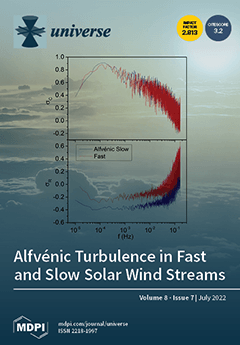X-ray flares are frequently detected in the X-ray afterglow light curves and are highly correlated with the prompt emission of gamma-ray bursts (GRBs). We compile a comprehensive sample of X-ray flares up to 2021 April, comprising 697 flares. We classify the total sample
[...] Read more.
X-ray flares are frequently detected in the X-ray afterglow light curves and are highly correlated with the prompt emission of gamma-ray bursts (GRBs). We compile a comprehensive sample of X-ray flares up to 2021 April, comprising 697 flares. We classify the total sample into four types: early flares (
s), late flares (
s), long gamma-ray burst (LGRB) flares and short gamma-ray burst (SGRB) flares, and analyze the distributions and relationships of the flare parameters. It is found that the early flares have a higher frequency, shorter duration, and more asymmetrical structure. In addition, the distributions of the morphological parameters of the SGRB flares are similar to those of the LGRB flares. We also find that the durations and rising (decay) times of the early flares are positively correlated with the peak times, but the late flares follow the different dependent relations. There is a strong anti-correlation between the peak luminosities (
) and the peak times of the flares, e.g.,
for the LGRB flares, and
for the SGRB flares, respectively. Furthermore, the peak luminosity is highly dependent on the isotropic energy (
) for the early LGRB flares, the best fit is
(
). We also find a tight three-parameter correlation,
(
). All the late flares fall into the
confidence region defined by the early flares. In terms of the point of kinematic arguments, both the SGRB and LGRB flares support a common scheme of internal origin. The SGRB flares have similar properties to the LGRB flares, suggesting that both of them share a similar physical mechanism from the late-time activity of central engine.
Full article





